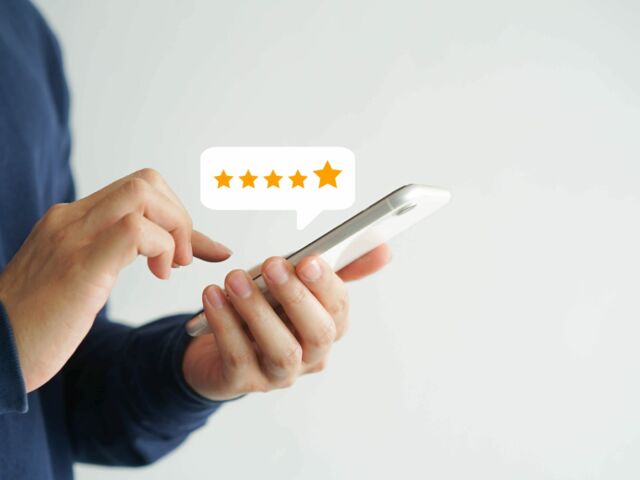You’ve probably noticed that more and more patients are eager to take their health management into their own hands—or onto their own wrists, feet or even thumbnails. For people who can afford them, personal technology devices (sometimes called “wearables” or “trackers”) make it easy to keep a close eye on health and fitness. Originally developed for athletes and now commonplace on children’s wrists, wearables are moving past step counts and deeper into healthcare. Wearables are proving useful in monitoring activity levels postsurgery and in cancer patients. And in certain patient populations—such as Alzheimer’s disease, dementia, autism and diabetes—they are essential to personal safety. But Big Tech is bringing more advanced health technology to nonpatients—and with it, the possibility of an information gap for your patients.
The Apple Watch Series 4 (starting at $399) debuted last month and has already created a lot of buzz, both good and bad, thanks to its health technology and the guest appearances of American Heart Association (AHA) and U.S. Food and Drug Administration (FDA) representatives on stage at the release. Simply touching a sensor on the side of this Apple Watch creates a single-lead electrocardiogram (ECG or EKG) that quickly tells the user whether his/her heart rhythm shows signs of atrial fibrillation, an irregular, usually rapid heartbeat that can increase the risk of cardiovascular disease and affects up to 6.1 million Americans. And with its sophisticated gyroscope and accelerometer, the Apple Watch can detect a hard fall and place an emergency call if the user doesn’t respond to an alert within 60 seconds. Apple is obviously banking on the aging U.S. population: who wouldn’t want this watch for a frail elderly parent or loved one with a movement disorder? And Apple doesn’t plan to stop there: ComputerWorld notes that Apple’s recent patent filings include blood pressure and glucose monitoring as well as sunburn/ultraviolet (UV) detection.
Other intriguing advances in personal health tech include:
- FitBit Charge 3: The latest FitBit; includes a sensor that measures blood oxygen saturation (SpO2) and breathing interruptions indicative of sleep apnea, as well as an improved fertility-tracking app. ($149.95; currently available.)
- Abilify MyCite: An ingestible/wearable hybrid medication for patients with schizophrenia and bipolar 1 disorder, a patient population with low medication adherence. The ingestible sensor is paired with a wearable patch, mobile app and web-based portal for caregivers and physicians—offering peace of mind that the patient is actually taking the medication. (Limited availability initially.)
- KardiaBand: An FDA-cleared ECG band for the Apple Watch. The linked SmartRhythm app monitors physical activity and heart rate, alerting the wearer to start the ECG app if unusual activity is detected. Manufacturer AliveCor has teamed up with the Mayo Clinicto find out whether the KardiaBand can be used to detect potassium level changes, a disease predictor. ($99 plus $9.99/month monitoring and data storage service; currently available.)
- L’Oréal UV Sense: A reusable sensor that measures ultraviolet (UV) exposure and is worn on the thumbnail for up to 2 weeks. The wearer receives updates and recommendations throughout the day and can download the data at the end of each 2-week period. (Price not available; coming in 2019.)
- TinyKicks eMotion Fetal Activity sensor: A continuous fetal monitor that can be affixed to a pregnant woman’s belly, taking the guesswork out of fetal kick counts in the third trimester. (In development.)
As exciting as these products are, many healthcare providers (HCPs) are downright wary about wearables. Although personal health technology is getting more accurate every day—more users means more data means continually improving algorithms—wearables aren’t intended for medical diagnosis and don’t provide complete information, leading to user anxiety and unnecessary testing. For example, high-tech baby monitors like the Owlet Smart Sock 2 ($299.99) have been sharply criticized by the American Academy of Pediatrics as unnecessary for healthy infants at home. Plus, most wearables aren’t FDA approved, and sometimes not even FDA cleared. Both Apple and FitBit are part of the FDA’s new Pre-Cert program, which allows certain tech companies a fast track through the clearance process. This is part of the FDA’s plan to encourage innovation, but some are worried that the FDA is lowering its standards.
There are definitely some downsides to health wearables: crowded emergency rooms, “worried well” patients asking for follow-up testing, office visits that run longer than scheduled because a patient wants you to review months of detailed personal health data. But these advances also mean that patients are becoming much more interested—and invested—in the minute details of their personal health, and that HCPs have the chance to learn more about predictive medicine, diagnosis and treatment. Wearables have become part of the daily routine for many Americans. By routinely asking your patients about health tech use and steering them toward trustworthy information online or with fact sheets, you can help them find their way through their own personal health data maze.


